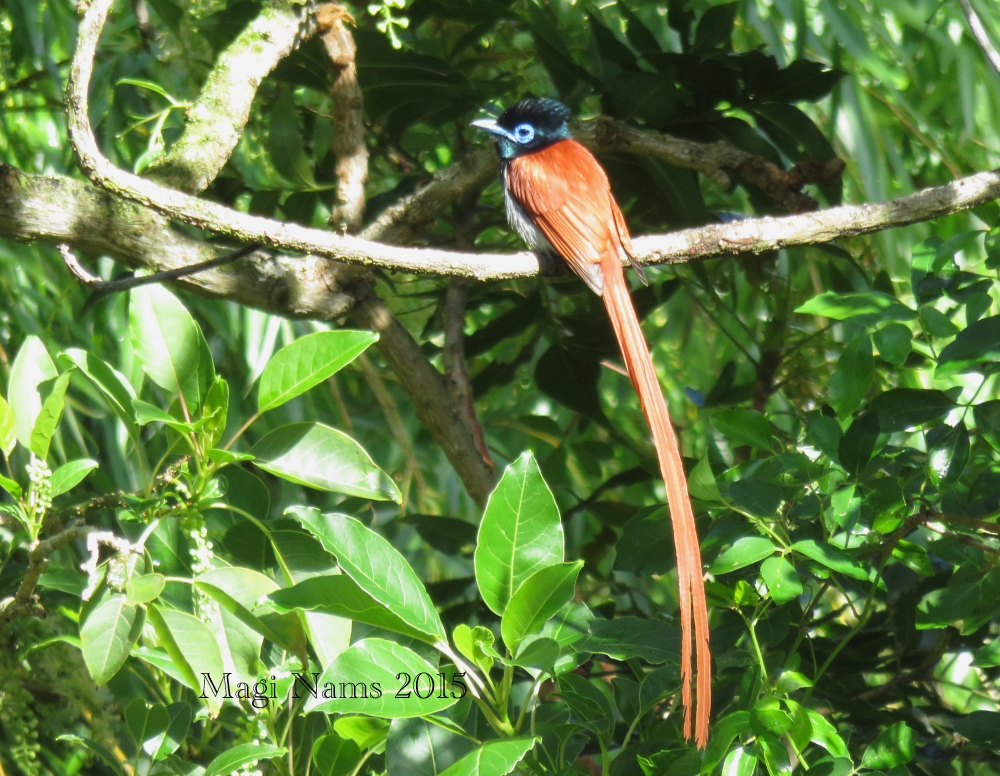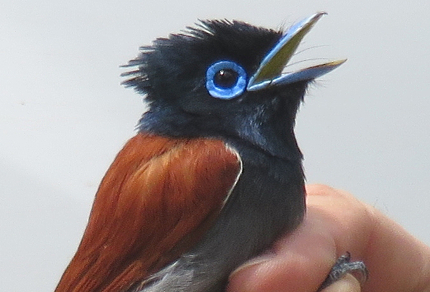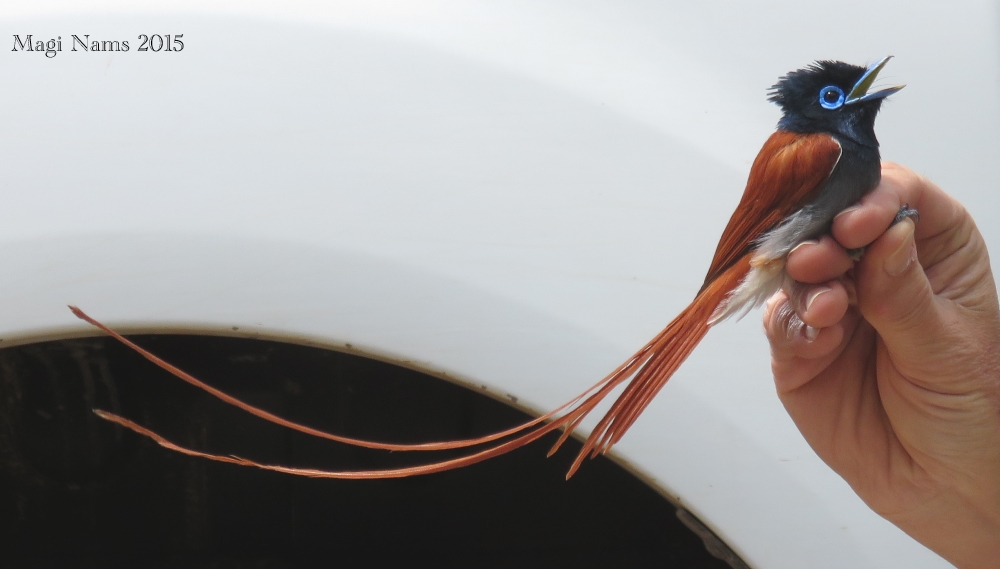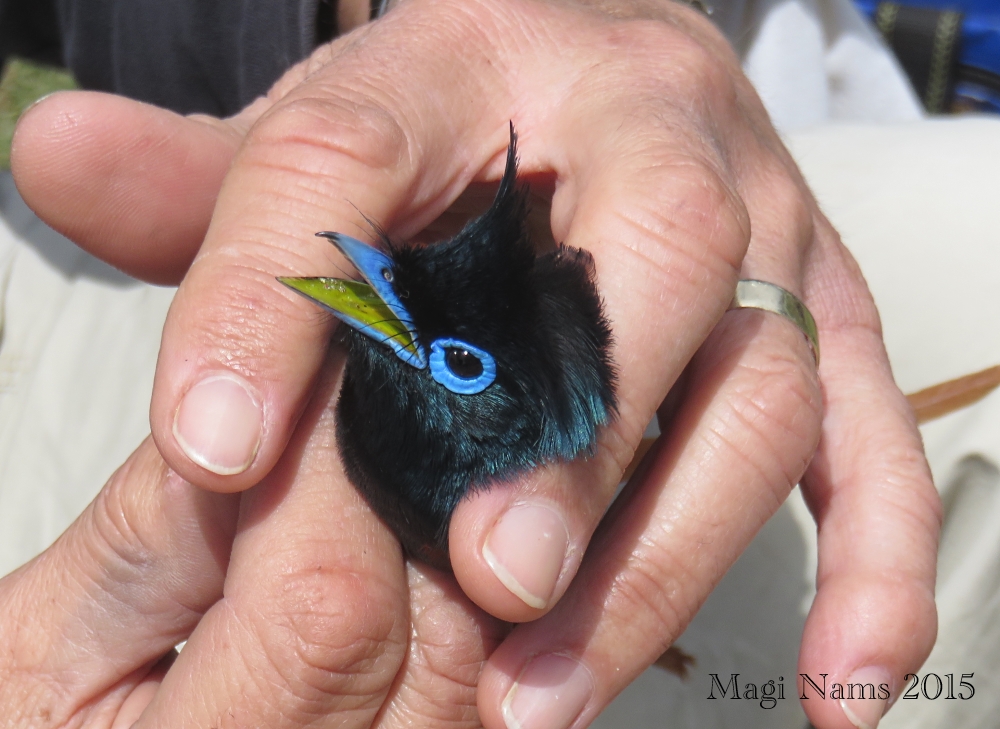One of Africa’s most beautiful birds, the agile African paradise-flycatcher inhabits forests and woodlands in much of sub-Saharan Africa.
In keeping with the South African theme of my last two posts, my first “bird of the week” is the exquisite African paradise-flycatcher, Terpsiphone viridis. (Tap on photos to enlarge.)
A member of the songbird order Passeriformes and family Monarchidae, this flycatcher’s scientific name is derived from two Greek words: terpsiphone, meaning “delightful voice,” and viridis, meaning “green” (refers to a greenish tinge on the head). [1]
As you can see from the photos, African paradise-flycatchers are medium-small (14 grams) songbirds. Their length is 17 centimetres, although the breeding male’s total length, including its elongated central tail feathers, can reach 30+ centimetres. [1, 2] Both males and females have chestnut brown upperparts and blue-grey heads with a greenish tinge. Females lack the long central tail feathers. Both males and females have a blue beak and blue eye-wattle ringing their eyes, both of which present a striking contrast to the paradise-flycatcher’s yellow gape.
The African paradise-flycatcher is an intra-Africa migrant that occurs in most parts of sub-Saharan Africa, as well as the southern Arabian Peninsula. In some regions, it’s a resident species. It inhabits riparian (riverside) woodlands, forests, wooded gardens, open woodlands and scrublands. [1, 2 ] As its name implies, this elegant songbird is insectivorous, although it will also feed on spiders and small berries. [1]
I saw my first African paradise-flycatcher at Fort Fordyce Nature Reserve in the Eastern Cape province of South Africa. I had been invited to accompany two Rhodes University ornithologists, Drs. Adrian Craig and Pat Hulley, on a forest bird mist netting and ringing outing. When Adrian removed the paradise-flycatcher from a cloth bag, I exclaimed with delight, thrilled to see this gorgeous creature up close. That’s where I took the above photos.
After that outing, I spotted African paradise-flycatchers at other sites in eastern South Africa, including Grahamstown’s Makana Botanical Gardens and the streamside woodland on Rhodes University’s campus, as captured in the photo below. The stunning African paradise-flycatcher was always one of my favourite avian sightings during my six months in South Africa.

Male African Paradise-flycatcher (Terpsiphone viridis) on Rhodes University Campus, Grahamstown (© Magi Nams)
References:
- Roberts Bird Guide. Hugh Chittenden. 2014. Trustees of the John Voelcker Bird Book Fund, Cape Town. pp. 210, 385.
- Sasol eBirds of Southern Africa. Ian Sinclair, Phil Hockey, Warwick Tarboton, Peter Ryan. African Paradise-flycatcher.




